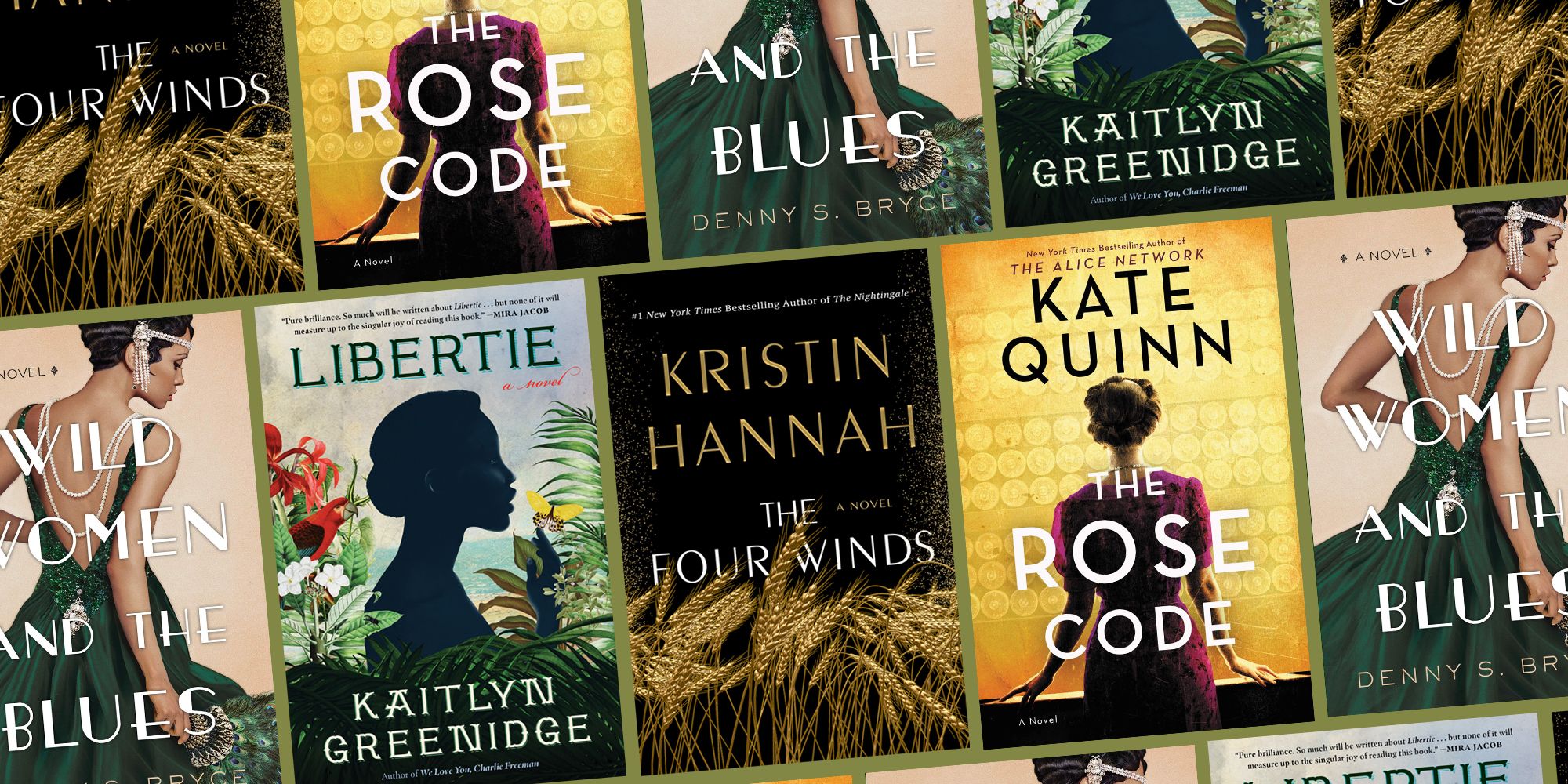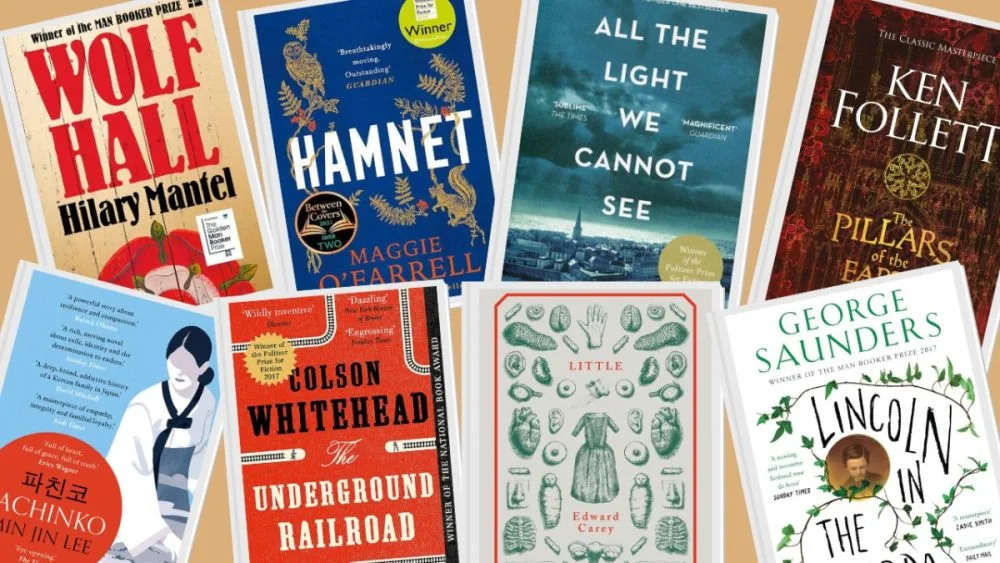A Journey Through Time: The Best Historical Fiction Books

The Pillars of the Earth by Ken Follett
Key details and synopsis
“The Pillars of the Earth” by Ken Follett is a highly acclaimed historical fiction novel that takes readers on a captivating journey through 12th-century England. The story revolves around the construction of a cathedral in the fictional town of Kingsbridge. It spans several decades and follows the lives of a diverse cast of characters, including Tom Builder, Prior Philip, and Aliena.
Historical accuracy and setting
Follett meticulously researched the Middle Ages to ensure historical accuracy in “The Pillars of the Earth.” The book successfully captures the political, social, and religious aspects of the time period. The vivid descriptions allow readers to immerse themselves in the medieval world, including the architectural intricacies of cathedral construction and the feudal system.
Character development and storytelling
One of the strengths of “The Pillars of the Earth” lies in its compelling character development. Follett crafts complex and relatable characters who undergo personal growth, face adversity, and confront moral dilemmas. The intertwining storylines keep readers engaged and eager to uncover the characters' fates.
Follett's storytelling prowess shines as he weaves together multiple narratives, skillfully balancing drama, romance, and political intrigue. The pacing is well-maintained throughout the book, with each chapter leaving readers craving for more.
In conclusion, “The Pillars of the Earth” is a must-read for historical fiction enthusiasts. Its meticulous historical accuracy, vivid setting, and well-developed characters make it a captivating and immersive reading experience. Ken Follett's masterful storytelling guarantees a gripping journey through the medieval world of Kingsbridge.

The Book Thief by Markus Zusak
Overview and plot summary
“The Book Thief” is a remarkable piece of historical fiction written by Markus Zusak. Set against the backdrop of World War II in Germany, the story revolves around Liesel Meminger, a young girl who discovers the power of words in the midst of chaos and destruction. As Liesel navigates her life in Nazi Germany, she immerses herself in the world of books and learns about love, loss, and the resilience of the human spirit. The novel takes readers on an emotional journey, exploring themes of friendship, family, and the importance of storytelling.
Historical backdrop: World War II
Zusak skillfully intertwines the fictional narrative with the brutal reality of Nazi Germany. By depicting the struggles and challenges faced by ordinary people during the war, Zusak provides a unique perspective on the historical events. The book delves into the impact of war on individuals and communities, capturing the fear, hope, and desperation prevalent during that era. Through vivid descriptions and well-researched details, Zusak transports readers back in time, shedding light on the horrors of Nazi rule and the resilience of those who resisted.
Unique narrative style and emotional impact
What sets “The Book Thief” apart is the captivating narrative style. The story is narrated by Death, offering a surprising and thought-provoking perspective on the events unfolding in the novel. Zusak's poetic and lyrical writing style evokes deep emotions, drawing readers into the lives of the characters. The book explores the power of words and their ability to both heal and destroy. Through Liesel's journey, readers witness the transformational impact of literature and its ability to provide solace and hope in the darkest of times.
In conclusion, “The Book Thief” is a must-read for lovers of historical fiction. With its compelling plot, rich historical backdrop, and profound emotional impact, it is a book that will stay with readers long after they turn the final page.

The Help by Kathryn Stockett
Synopsis and main themes
“The Help” by Kathryn Stockett is a captivating historical fiction novel set in Jackson, Mississippi, during the 1960s civil rights movement. The story centers around three women – Skeeter, Aibileen, and Minny – who form an unlikely bond as they navigate a society divided by racial inequality. Skeeter, an aspiring writer, decides to give voice to the experiences of the African American maids in Jackson by secretly collecting their stories and publishing them. Through their narratives, Stockett explores themes of racism, discrimination, and the power dynamics within a deeply divided community.
Exploring racial inequality in the 1960s
“The Help” beautifully presents the harsh realities of racial inequality that persisted during the 1960s. Stockett portrays the daily struggles, hardships, and systemic injustices faced by African American maids in the era of segregation. The book delves into the social and cultural norms that suppressed their voices and limited their opportunities. By shedding light on these issues, Stockett encourages readers to reflect on the importance of equality, understanding, and empathy.
Character-driven storytelling and compelling narrative
One of the key strengths of “The Help” is Stockett's ability to create complex, well-developed characters. Each character has a unique voice and perspective, allowing readers to connect with them on a deep emotional level. The relationships between the main characters and the challenges they face bring the narrative to life and make it a powerful exploration of friendship, courage, and the fight for justice.
With its thought-provoking themes and compelling storytelling, “The Help” continues to be a popular and critically acclaimed historical fiction book that offers important insights into the racial tensions of the 1960s.

Wolf Hall by Hilary Mantel
Plot summary and historical context
Wolf Hall is a critically acclaimed historical fiction novel written by Hilary Mantel. Set in the 16th century, the book revolves around the rise of Thomas Cromwell, a key figure during the reign of King Henry VIII. The plot delves into the political intrigues, power struggles, and religious upheaval of Tudor England. Mantel’s meticulous research brings historical events to life, highlighting the complex relationships between Cromwell, Anne Boleyn, and the King.
The novel brilliantly weaves together a tapestry of historical accuracy and storytelling, providing readers with a deep understanding of the era. While the book is a work of fiction, Mantel’s attention to detail and compelling narrative make it feel like an intimate portrayal of real historical events. Wolf Hall won the prestigious Man Booker Prize in 2009, solidifying its place as a must-read for historical fiction enthusiasts.
Bringing Tudor England to life
Mantel masterfully captures the sights, sounds, and emotions of Tudor England, allowing readers to immerse themselves in the era. Through her vivid descriptions and fully realized characters, she presents a layered and nuanced portrayal of the historical figures involved. The book explores the complexities of political power, religious turmoil, and personal ambition, shedding light on a pivotal period in English history.
Moreover, Mantel’s prose is rich and evocative, drawing readers into a world of opulence, treachery, and redemption. Wolf Hall stands as a testament to the author’s ability to blend historical accuracy with compelling storytelling. The book’s success has led to two sequels, forming the acclaimed Thomas Cromwell Trilogy.
For those seeking a captivating historical fiction novel that seamlessly blends fact and fiction, Wolf Hall is a must-read. Mantel’s expert storytelling and meticulous research transport readers to Tudor England, making this novel a true gem in the genre.

Gone with the Wind by Margaret Mitchell
Overview and significance
“Gone with the Wind” is a timeless masterpiece of historical fiction written by Margaret Mitchell. Set in the American South during the Civil War and Reconstruction era, the novel follows the life of Scarlett O'Hara as she navigates the challenges and changes brought by the wartime turmoil. Published in 1936, the book quickly became a literary sensation and remains an enduring classic to this day.
The novel's significance lies not only in its portrayal of a tumultuous period in American history but also in its exploration of themes such as love, survival, and resilience. Through Scarlett's character, Mitchell captures the essence of a determined and headstrong woman who endures hardships and fights for her own survival in a changing world.
Civil War setting and Southern society
Set against the backdrop of the Civil War, “Gone with the Wind” provides a vivid depiction of Southern society at the time. Mitchell meticulously weaves together historical events and personal narratives to offer a glimpse into the complex social dynamics, class structures, and racial tensions that defined the era.
The novel delves into the economic, political, and cultural aspects of the South, shedding light on the plantation system, the struggles of Reconstruction, and the effects of war on individuals and society. Mitchell's attention to detail and authentic representation of the time period make “Gone with the Wind” a rich and immersive reading experience.
With its compelling characters, sweeping narrative, and evocative portrayal of a bygone era, “Gone with the Wind” continues to captivate readers and remains one of the best historical fiction books ever written.

The Shadow of the Wind by Carlos Ruiz Zafón
Key details and storyline
“The Shadow of the Wind” by Carlos Ruiz Zafón is a captivating historical fiction novel set in post-World War II Barcelona. The story revolves around a young protagonist, Daniel Sempere, who discovers a mysterious book in the Cemetery of Forgotten Books. As he delves into the enigmatic world of the book, he becomes entangled in a web of secrets and danger.
The gripping storyline follows Daniel's journey to uncover the truth behind the book and its author, Julian Carax. As Daniel investigates Carax's life, he encounters an array of intriguing characters, from the eccentric bookseller Fermin Romero de Torres to the malevolent Inspector Fumero. Along the way, Daniel uncovers a tale of love, betrayal, and revenge that spans generations.
Post-Spanish Civil War atmosphere
One of the most remarkable aspects of “The Shadow of the Wind” is its vivid portrayal of the post-Spanish Civil War atmosphere. Zafón masterfully captures the palpable sense of fear, uncertainty, and repression that permeated Barcelona during that time. The city serves as a backdrop to the characters' struggles, mirroring their own battles with personal demons and society's injustices.
Zafón's meticulous attention to historical detail transports readers to a bygone era, allowing them to immerse themselves in the rich tapestry of post-war Barcelona. The atmospheric setting enhances the narrative, evoking a sense of nostalgia and adding an extra layer of depth to the story.
“The Shadow of the Wind” is a must-read for fans of historical fiction who appreciate intricate storytelling, memorable characters, and a meticulously crafted historical backdrop. Zafón's unique blend of mystery, romance, and historical context makes this novel a true masterpiece of the genre.

The Poisonwood Bible by Barbara Kingsolver
Synopsis and key themes
In Barbara Kingsolver's “The Poisonwood Bible,” the story revolves around the Price family, specifically Nathan Price, a fervent Baptist missionary who takes his wife and four daughters to the Belgian Congo in 1959. The book delves into the lives and perspectives of the family members as they navigate through a tumultuous and changing African landscape.
The key themes explored in this historical fiction masterpiece include the destructive nature of colonialism, cultural clashes, the exploration of gender roles, and the significance of personal identity. Through vivid character development and robust storytelling, Kingsolver blends these themes seamlessly into the narrative, offering readers a thought-provoking and immersive experience.
Colonialism and cultural clashes in Africa
One of the central themes of “The Poisonwood Bible” is the destructive impact of colonialism on Africa and its indigenous people. Kingsolver skillfully portrays the cultural clashes between the Price family and the Congolese people, highlighting the arrogance and ignorance of the colonizers. Through these interactions, readers gain insight into the complexity of colonial legacies and the lasting effects they have on both individuals and communities.
Additionally, the novel explores the intricate web of relationships between different ethnic communities living in Africa, depicting the diverse traditions, languages, and belief systems. This rich portrayal helps readers understand the challenges faced by the Price family as they grapple with the unfamiliar cultural landscape and the consequences of their own cultural presumptions.
Barbara Kingsolver's “The Poisonwood Bible” is a compelling historical fiction novel that skillfully examines the themes of colonialism, cultural clashes, and personal identity. Through its thought-provoking storytelling, it offers readers a deeper understanding of the complex dynamics of historical events and their impact on individuals and societies.

All the Light We Cannot See by Anthony Doerr
Plot overview and historical backdrop
Set during World War II, All the Light We Cannot See by Anthony Doerr tells the interconnected stories of two young individuals, Marie-Laure and Werner, whose lives are profoundly affected by the war. Marie-Laure is a blind French girl who flees Paris with her father to seek refuge in Saint-Malo, while Werner, a young German orphan, is recruited by the Nazis due to his talent with radios.
The novel skillfully weaves together their narratives, exploring themes of love, loss, and the immense power of human connection. As they navigate the chaos and destruction of war, their paths eventually converge in a way that will leave readers captivated until the very end.
World War II and its impact on individuals
Through the lens of Marie-Laure and Werner, All the Light We Cannot See provides a poignant portrayal of the devastating impact of World War II on individuals. It examines the profound loss and hardships faced by those caught in the midst of conflict, while also highlighting the resilience and strength of the human spirit.
By intertwining historical events with intimate personal stories, Doerr creates a vivid and deeply moving account of the human experience during this dark period in history. Readers will gain a greater understanding of the personal sacrifices and complexities individuals faced during World War II, fostering empathy and appreciation for the enduring power of hope in the face of adversity.
All the Light We Cannot See is a beautifully written and emotionally charged novel that offers both a captivating plot and a unique perspective on one of the most significant historical periods. It is a must-read for fans of historical fiction seeking a profound and thought-provoking exploration of the human condition during times of turmoil.

